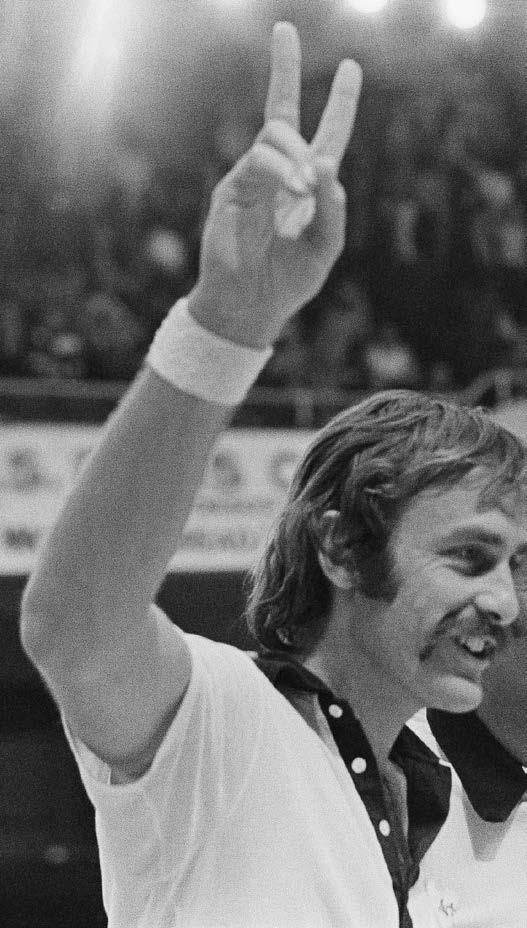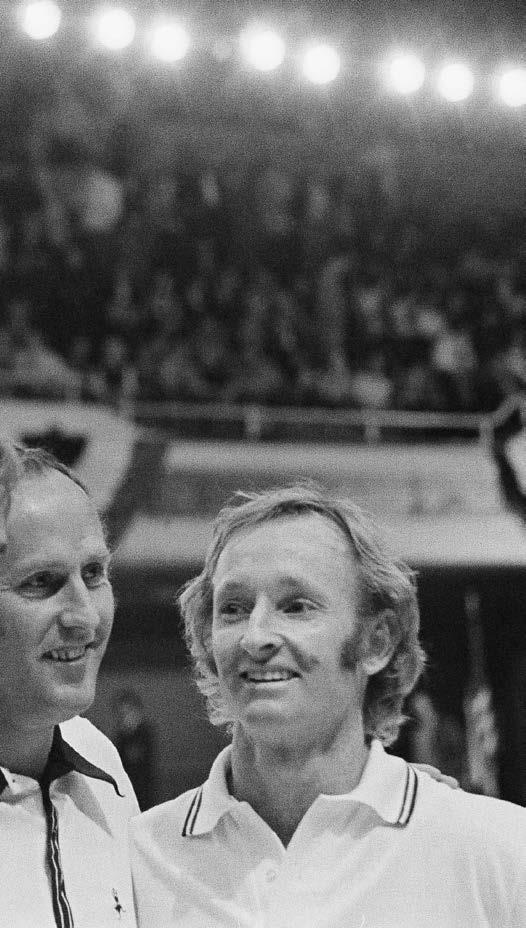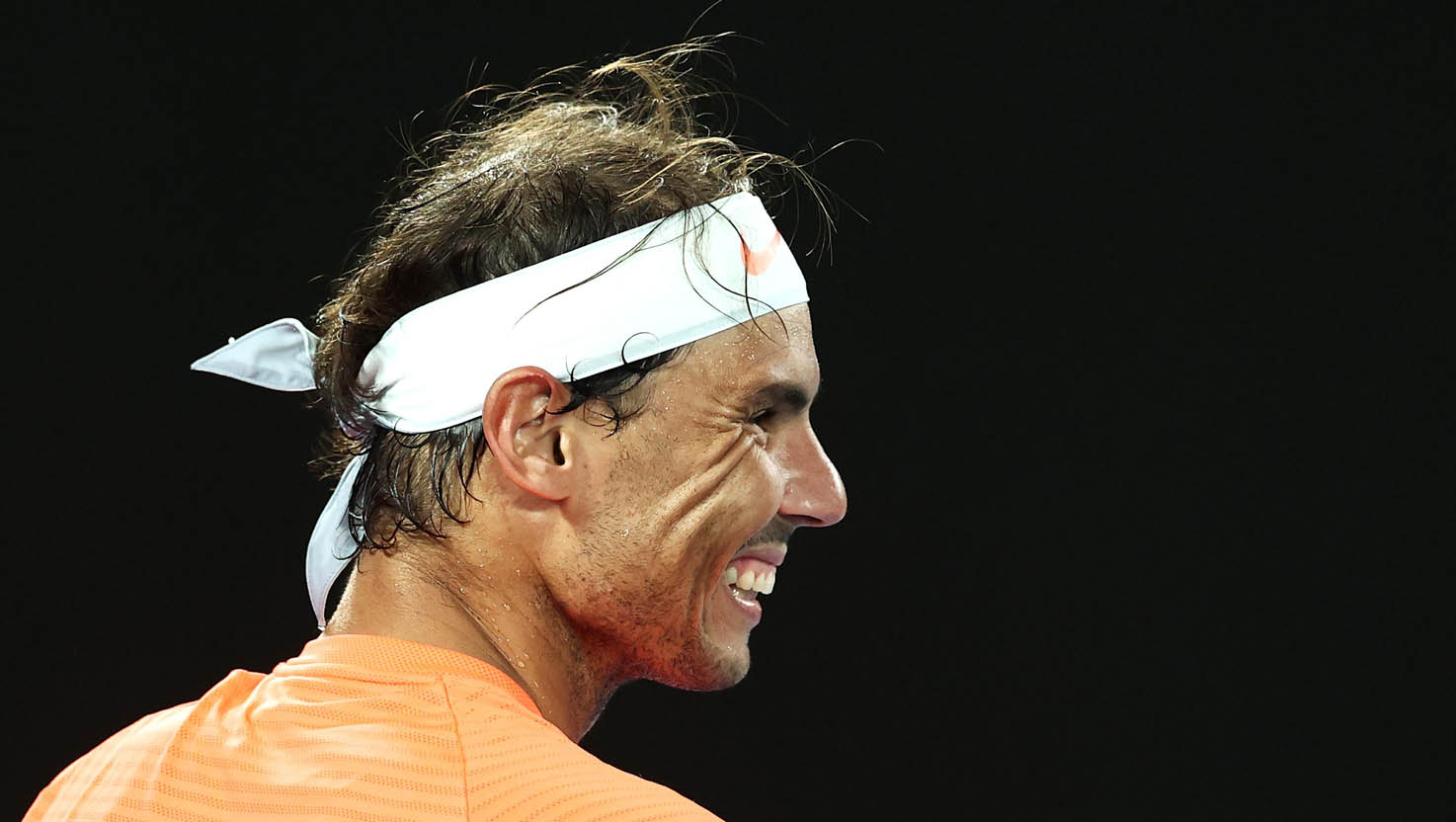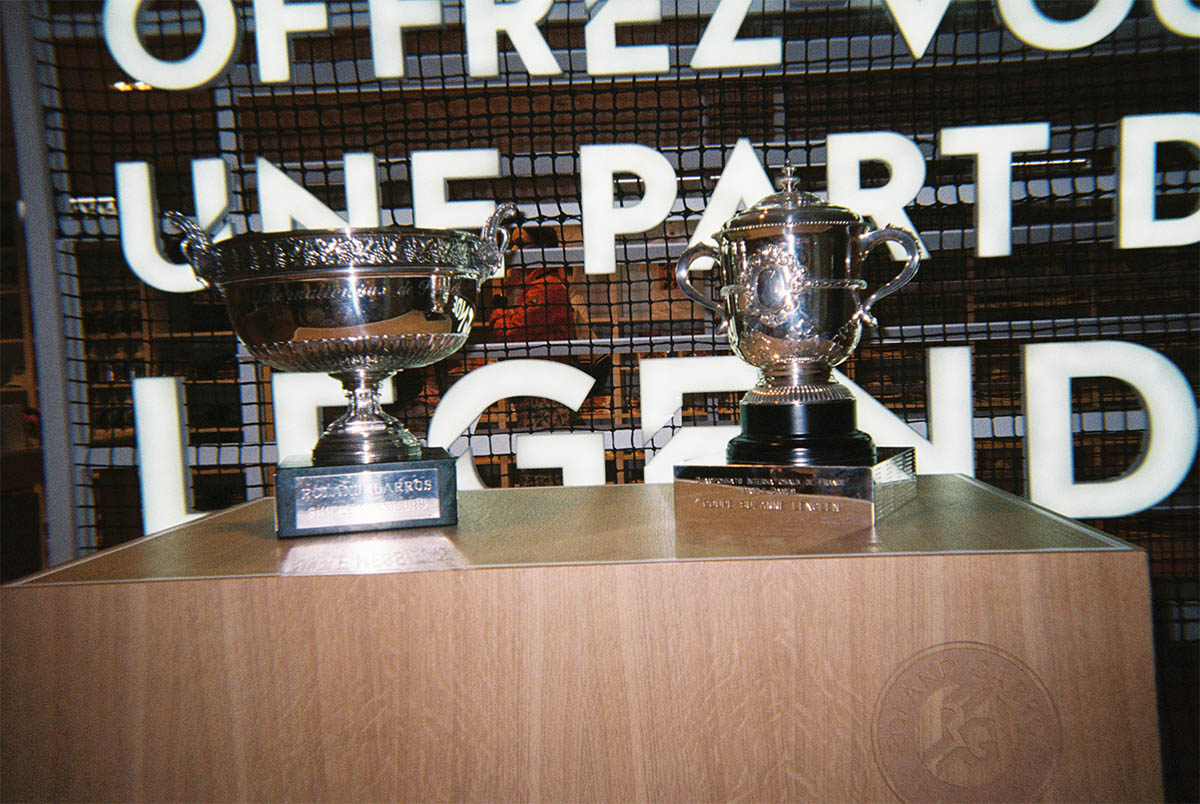Hypothetical branding by Luke Shuman
Open Rod Laver’s autobiography, The Education of a Tennis Player, and find yourself reminded again and again that there was a time when Davis Cup tennis mattered. Really mattered. Mattered to top players. Mattered to fans. Mattered to Bud Collins, who wrote the book with Laver. (Mattered to Australia, of course, which dominated Davis Cup play in the 1950s and 1960s.) Mattered to tennis’ sense of itself—the way the majors continue to matter, but Davis Cup no longer does.
Laver ranks the pressure he felt playing Davis Cup with that of playing at Wimbledon. He recalls the 1959 Davis Cup final on grass at Forest Hills, where Australia wrested the cup from the reigning American champions—and where the young Laver lost both his rubbers, or matches—as being “as tense as anything I’ve been through.” He loved playing for his country—and how the fans and the press got worked into a frenzy—and believed the other players of his time did, too. He quotes Arthur Ashe, who thought Davis Cup was bigger than the Olympics: “[Y]ou can’t escape the fact and feeling that your country is depending on you and your game.” Laver’s only complaint was with the format, which kept him from playing more Davis Cup tennis. If you were defending the cup, you only played in the final tie, or round, against the survivor of the preliminary elimination ties.
That changed: Beginning in 1972, the Davis Cup became a knockout tournament, and the defending champion was required to compete in all rounds. Other changes followed, as tennis increasingly became a global sport. (Until 1974, only four countries had ever won the Cup: the United States, Australia, Great Britain, and France.) But those changes have not kept up with the times—neither with the overwhelming demands placed on today’s male players by the nature of the game and the crowded ATP schedule; nor with the way fans, both those watching live and the millions more in front of their TVs, immerse themselves in sport. And, as a result, Davis Cup has become something of a sideshow. The stars of the game often enough skip a year, or more than a year. Fans only care, if they care at all, when their team is playing a home final. Tennis as a national- team sport—at a time when national-team sports like soccer have never been more popular, and when men’s tennis has been experiencing a golden age—languishes. In the global pop culture, where sport today resides and thrives, Davis Cup tennis is a hazy, intermittent, peripheral undertaking, musty with nostalgia and lacking the focused intensity and electrifying spectacle that have fixed a place for athletic greatness in the public imagination.
The new president of the International Tennis Federation, David Haggerty, has said that a top priority of his is to bring some sort of format change to the Davis Cup. (Already, a fifth-set tiebreak has been instituted.)
He’s an American, the first to head the ITF since the 1970s, and he told Christopher Clarey of The New York Times last fall that he is in favor of an idea John McEnroe has been championing for a number of years: creating a Final Four for the Davis Cup team semifinalists, to be played at a neutral site. Haggerty acknowledges that such a change will not be an easy sell to the national tennis associations whose approval by vote would be required. They tend to be tennis traditionalists, and there is a lot of tradition in the 115-year history of the Davis Cup. What there no longer is—and this is what Haggerty has going for him as he seeks to evolve the format—is a lot of revenue. Last year, over the course of nearly ninety events around the world, Davis Cup tennis generated only $25 million. In two weeks of tennis, the U.S. Open generated ten times that amount.


Davis Cup Winners, from 1946 to 1973:
’4 6 U.S.
’4 7 U.S.
’4 8 U.S.
’4 9 U.S.
’50 Australia ’51 Australia ’52 Australia ’53 Australia ’54 U.S.
’55 Australia ’56 Australia ’57 Australia ’58 U.S.
’59 Australia
’60 Australia
’61 Australia
’62 Australia ’63 U.S.
’64 Australia ’65 Australia
’66 Australia ’67 Australia ’68 U.S.
’69 U.S.
’70 U.S.
’71 U.S.
’72 U.S.
’73 Australia
As refreshing as it is to hear that Haggerty is committed to changing the format of the Davis Cup, his thinking doesn’t go nearly far enough. It’s a contest born of a late Victorian ideal of upper-class leisure and gentlemanly competition: Why not reimagine it for an age of professionalism and TV viewing (and social media), the way the four majors have? If you were designing an international team-tennis competition for pro men’s tennis players today, what might it look like? Put another way: If you sought to make the Davis Cup “the World Cup of Tennis,” as it markets itself, what would the format be?
What the tennis public thinks of as the Davis Cup is the so-called World Group— the sixteen best national teams, which always include the previous year’s Cup winner and runner-up, with the remaining teams chosen based on an ITF ranking system.
Nations whose teams don’t make the World Group cut compete in ranked groups and regional zones of somewhat boggling complexity and, for the most part, in provincial obscurity. Revenue from the grouped, zoned play may help local tennis associations, but revenue—more revenue— can be found elsewhere: by creating an event that attracts a larger TV audience, for example. A sixteen-team competition makes sense. Let’s abandon the rest.
Now, onto that 21st-century Davis Cup event. Not every year but every two years— the year following the Olympics, and then the year before the next Olympics—let’s bring together these sixteen top teams for a year-end, ten-day-long competition at a neutral site, chosen from among bidders and moved among countries and continents.

“We wanted Yank heads to show that the, shall we say, mature Aussies were still breathing,” Rod Laver wrote after, at 35, helping reclaim the Davis Cup from the U.S. in 1973. Pictured with John Newcombe (left) and captain Neale Fraser (center). ap photo
This end-of-year event will not necessarily mean indoor tennis (think Buenos Aires, where fans love Davis Cup) and, in this day and age, indoor tennis need not mean hardcourt tennis. The nation hosting the event will choose the surface.
How to determine the teams? Let’s borrow from the Olympics and choose based on players’ ATP rankings at a given point in the tennis season. The country whose top four ATP-ranked singles players add up to the lowest number is the top-seeded team, and so on. As it will be a biennial event, it seems fair to average the rankings of the previous two years. And since it will be a year-end event, why not announce the teams at the conclusion of The Championships at Wimbledon?
Once the 16 four-member teams arrive at the tennis World Cup, they will play knockout ties (there is not enough time for World Cup-like round-robin early rounds) based on seedings determined by the ranking. Each tie will, as today, consist of four singles rubbers and one doubles rubber. But in the interest of making things more interesting, there will be format changes, too, to the ties and rubbers. First, “reverse” singles will be eliminated: A given player can play only one singles rubber per tie (though he can, as now, play doubles, too, in a tie in which he’s playing singles). Andy Murray led Britain to its Davis Cup victory last year, and great for him and Britain. But team tennis should be about team tennis, and limiting the singles play of the dominate players of an era will serve as an equalizer, along with providing a larger role for lesser- known, up-and-coming players.
And how about we find a way to limit “dead” rubbers—those meaningless matches on day 3 of Davis Cup ties when one team has already won the first three ties and eliminated the opposing team? Currently the format is: two singles matches on day 1 (typically a Friday); doubles on day 2; reverse singles on day 3. Let’s squeeze a tie into two days, which, with the elimination of reverse singles (and the need for the singles players to have an off day to recover), should not be a problem. Day 1: two singles matches, meaning there must be a day 2 to clinch. Day 2: two singles matches (with fresh players) and a doubles match wedged between them. Yes, day 2 could still be an abbreviated day, but there will be at least one tie, and probably more, with a limit on using your star player for a second singles match.

What’s lost here? The home final, of course, which is no small thing. The cacophony of fans rooting for their home team! It is what makes Davis Cup special. In particular, there are the smaller nations that have hosted a Davis Cup final but that are less likely, in truth, to win a bid as a neutral site. In recent years, there’ve been the Czechs and the Swiss; there were the Croats in 2005, and all those years in the 1980s and 1990s when the Swedes were so dominant.
However, run your eye down the list of nations that have won the Davis Cup over the years. It’s a very, very short list: thirteen. (Fourteen if you count South Africa in 1974, but that final tie was never played; India boycotted the event to protest apartheid policies.) It is not hard to imagine a couple dozen nations that might host a neutral- site final. Or look at it this way: There are only eight nations whose teams have won more than one Davis Cup. Under the format change I’m proposing, sixteen nations each year arrive at the World Cup of Tennis with a chance, over ten days, to win.
The host nation could be selected four years in advance, or more, providing plenty of time for planning and promotion. Fans travel the globe to see World Cup soccer; tennis isn’t soccer, of course, but it’s not hard to envision fans flying off to a ten-day team tournament, as they do to majors. Television rights to a year-end Davis Cup like the one being proposed here have got to be worth more—eventually, much more—than those for the current format. And wouldn’t the Fed Cup soon adopt this sort of format for women’s team play should Davis Cup do so? There could come a time when the two would be combined over two weeks, and perhaps intermingled, and this fully realized tennis World Cup becomes a kind of fifth major, with ATP and WTA points awarded.
Now, there’s a tourney that would matter.
Gerald Marzorati, a former editor of The New York Times Magazine, is the author of Late to the Ball, a memoir about tennis and aging. He writes about tennis regularly for the newyorker. com.
Featured in Racquet Issue No. 1





